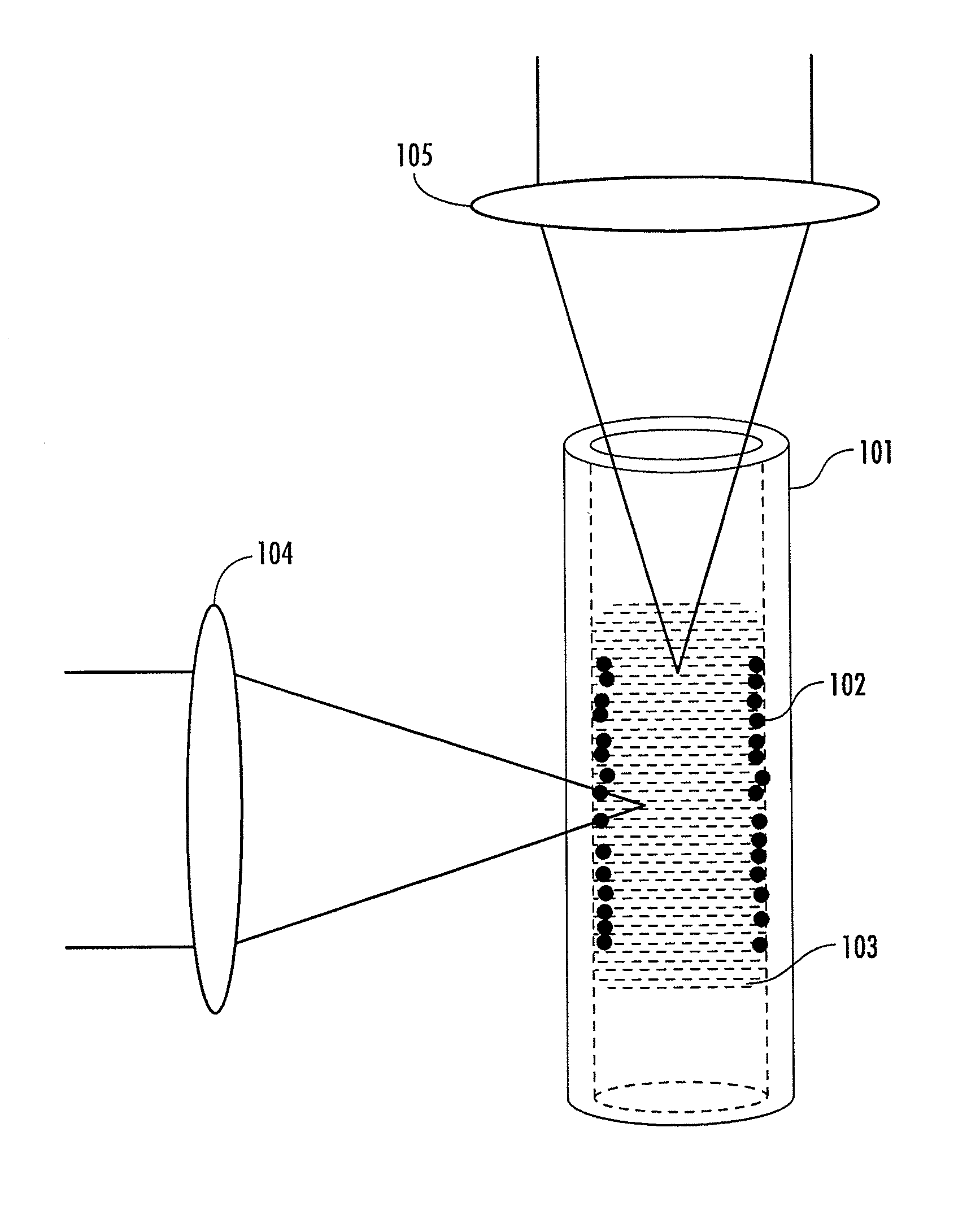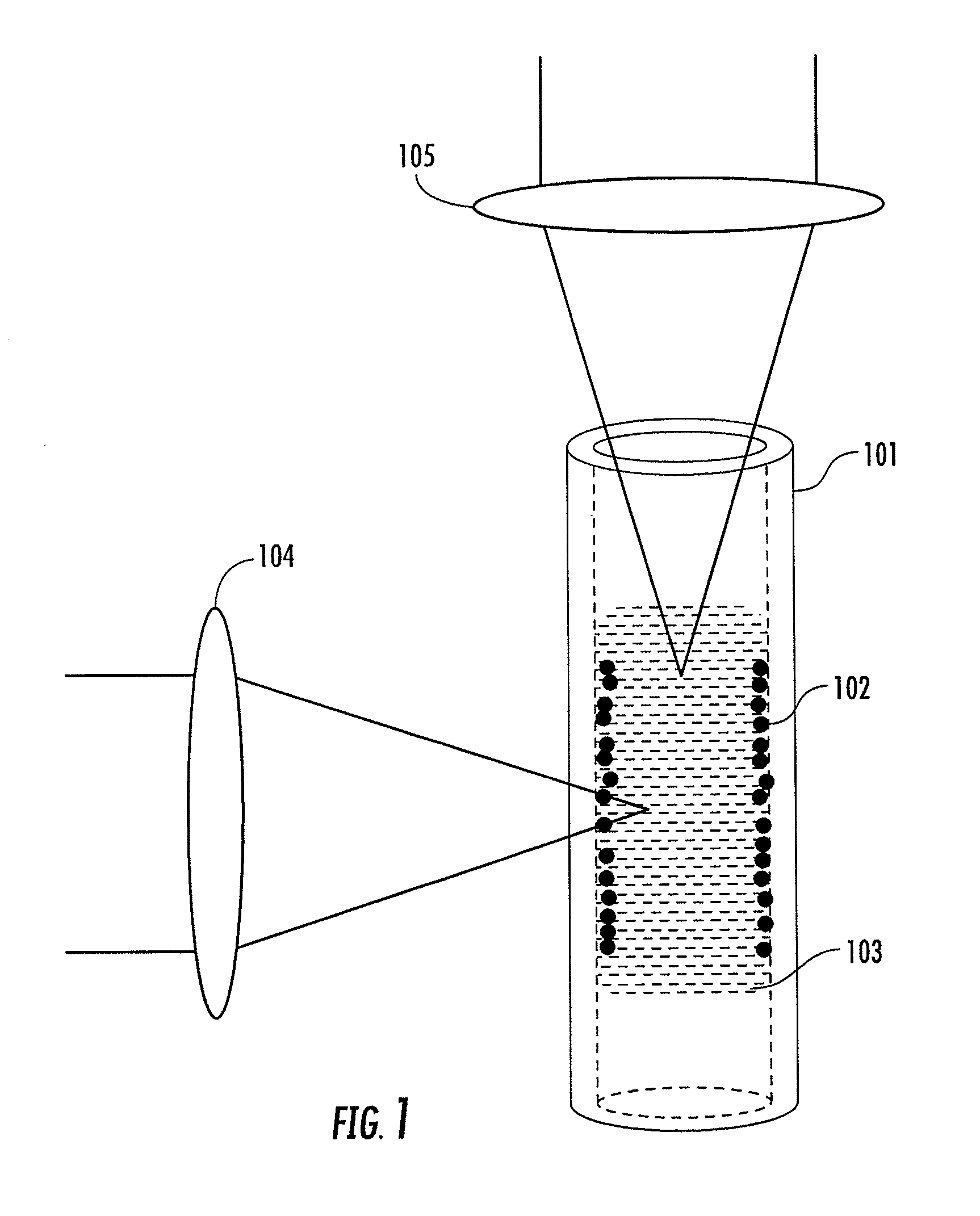Surface-enhanced raman scattering apparatus and methods
a raman scattering and surface technology, applied in the field of surface-enhanced raman scattering, can solve the problems of reducing the effectiveness of sers substrates when performing measurement upon analyte, reducing the efficiency of sers substrates when performing measurement on analyte, and reducing the efficiency of sers substrates, so as to improve the repeatability and throughput of signal processing.
- Summary
- Abstract
- Description
- Claims
- Application Information
AI Technical Summary
Benefits of technology
Problems solved by technology
Method used
Image
Examples
example
[0055]As an example, FIG. 16 shows a SERS spectrum of crystal violet (which is a widely used dye for indicating SERS activity) taken with a single SERS tube. The analyte was prepared as an aqueous solution of 10 ppm crystal violet. In making the SERS tube, a colloidal solution of Au nanoparticles was first produced by femtosecond pulsed laser ablation of Au in a liquid solvent. The target was a sheet of Au metal, and acetone was chosen as the solvent for its high volatility. During ablation, the target was submerged in acetone, and the colloid was formed directly in acetone. The laser had a pulse energy of 10 micro Joules, a pulse duration of 500 femtoseconds, and a repetition rate of 10 MHz. Notably, as previously discovered and disclosed in U.S. patent application Ser. No. 12 / 320,617, the colloid can remain for several months as a stable suspension without additional stabilizing chemicals. The colloid was then injected into a glass tube with an inner diameter of 2 mm and wall thic...
PUM
| Property | Measurement | Unit |
|---|---|---|
| Time | aaaaa | aaaaa |
| Time | aaaaa | aaaaa |
| Time | aaaaa | aaaaa |
Abstract
Description
Claims
Application Information
 Login to View More
Login to View More - R&D
- Intellectual Property
- Life Sciences
- Materials
- Tech Scout
- Unparalleled Data Quality
- Higher Quality Content
- 60% Fewer Hallucinations
Browse by: Latest US Patents, China's latest patents, Technical Efficacy Thesaurus, Application Domain, Technology Topic, Popular Technical Reports.
© 2025 PatSnap. All rights reserved.Legal|Privacy policy|Modern Slavery Act Transparency Statement|Sitemap|About US| Contact US: help@patsnap.com



